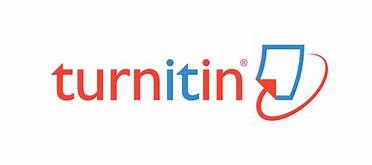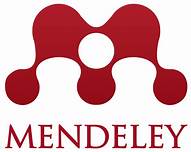- Focus and Scope
- Section Policies
- Publication Frequency
- Open Access Policy
- Publication Ethics
- Peer Review Process
- Publication Frequency
- Author Guideline
- Author Fees
- Submission Guidelines
- Copyright Notice
- Open Access Policy
- Visit Counter
Focus and Scope
Journal of Elementary, Middle and Higher Education Management, published by Master of Postgraduate Education Management, Universitas Muhammadiyah Sumatera Utara. Published articles are the results of research in the field of education management (primary, secondary, higher education). Includes themes :
- Educational Human Resources Management
- Curriculum Development and Learning
- Learners and Student Affairs
- Educational Finance and Budgeting
- Educational Organizational Behavior
- Quality Assurance in Education
- Educational Evaluation and Supervision
- Educational Facilities and Infrastructure
- Marketing and Entrepreneurship in Education
- Educational Institution Relations and Society
- Management of Educational Institutions
- Education Technology and Information
- Strategic Management in Education
Section Policies
Articles
Full Paper
Publication Frequency
We invite you to submit your manuscript to Jurnal Manajemen Pendidikan Dasar, Menengah Dan Tinggi (JMP-DMT). The manuscript is published in four times in a year (January, April, July and October). Manuscripts submission deadlines:
Vol. 6 No.1, 2025, submission deadline: 10 Desember
Vol. 6 No.2, 2025, submission deadline: 10 Maret
Vol. 6 No.3, 2025, submission deadline: 10 Juni
Vol. 6 No.4, 2025, submission deadline: 10 September
JMP-DMT receives scientific papers from both the result of research and theoretical study of Management and Education
Open Access Policy
This journal provides immediate open access to its content on the principle that making research freely available to the public supports a greater global exchange of knowledge.
Publication Ethics
JMP-DMT is published 4 times in 1 year (January, April, July, and October) Authors have the responsibility to ensure that:
- The article is an original work and does not involve fraud, fabrication, or plagiarism.
- The article has not been previously published and is not currently under consideration for publication elsewhere. If accepted by the JPM-DMT team for publication, it will not be submitted for publication in other journals.
- The article does not contain defamatory or unlawful statements and does not contain material that infringes upon individual privacy, proprietary rights, or copyright laws.
- Authors must include citations for the sources from which quotations were obtained.
- The author has made significant contributions to this research including the conception and design of the article, data analysis, and article writing.
- The author is responsible for the content of the published article.
Peer Review Process
Publication Frequency
JMP-DMT is published 4 times in 1 year (January, April, July, and October)
Vol. 6 No. 1, submission deadline: 10 January 2025
Vol. 6 No. 2, submission deadline: 10 April 2025
Vol. 6 No. 3, submission deadline: 10 July 2025
Vol. 6 No. 4, submission deadline: 10 October 2025
Manuscript must be published by the 29th
Author Guideline
Guidelines for Writing Articles in JMP-DMT (Online Journal):
Articles must be original scientific works that have never been published before and are not currently being submitted for publication elsewhere/in other media/journals.
Articles can be written in either Indonesian or English. Authors are expected to write their articles according to the specified format.
Articles should be written with a maximum of 15 pages, using Times New Roman font. You can submit your article through the JMP-DMT journal address at the following link: http://jurnal.umus.ac.id. Authors must log in first to submit their journal.
The systematic writing of the journal should contain an introduction consisting of the background of the problem and research objectives, theoretical review, methods used in problem-solving, results and discussion, conclusion, and references.
- The writing format must follow these specifications:
- Title: 12 pt.
- Author's name: 11 pt. Complete with position/institution and email of each author
- Keywords: 10 pt.
- Section, subsection, and reference titles: 12 pt and written in capital letters.
- Content text: 12 pt, justified alignment.
- Abstract: 10 pt, bold and justified alignment. (English and Indonesian)
- Figure captions: 10 pt, center.
- Table captions: 10 pt, center.
- References: 11 pt, justified alignment.
- Margins: Left: 20mm, right: 20mm, top: 20mm, bottom: 20mm.
Tables must be numbered, for example: Table 1. Categories. With table captions (number and title of the table) placed in the center position above the table.
Figures must be numbered, for example: Figure 1. Context Diagram. With figure captions (number and title of the figure) placed in the center position below the figure.
Mathematical formulas must be written clearly, accompanied by numbering and include an explanation of the intended formula.
Citation and reference writing should be written referring to the reference list written in the form of name and year in parentheses.
Example of citations: Arikunto (2005) or Hoy and Miskel (2014), or Suhendar, et al. (2003); Hoy, et al. (2015) if there are more than two authors.
Example of reference list:
Hidayat, M.A, & Sudarno, D. (2015). Penelitian Pendidikan. Bandung: Rosdakarya
Reeves, G, Herrington, J & Oliver, S. Authentic E-learning in Higher Education: Design principles for Authentic Learning Environments and Tasks. Journal of the Learning Sciences, Vol 1, No 2, 2003, Pp141-178
Open Educational Resources (OER). Unesco, 2000, http://www.unescoedu.org
Reference sources or citations included in the manuscript should be primary reference sources published in the last 10 years.
All manuscripts submitted for publication in JMP-DMT (Online Journal) will undergo an assessment process by Reviewers.
Authors will receive notification from the editorial board if their manuscript is rejected or accepted. Manuscript authors will be given the opportunity to revise their manuscript based on recommendations/suggestions from Reviewers.
Author Fees
Submission Guidelines
Manuscripts must be submitted via online, with the following steps:1. Online paper submited in the portal Jurnal Manajemen Pendidikan Dasar, Menengah dan Tinggi, link: https://jurnal.umsu.ac.id/index.php/JMP-DMT/user/register
2. Select Menu REGISTER on the homepage, author registering as a Writer (Checking role as Author) at the address: https://jurnal.umsu.ac.id/index.php/JMP-DMT/user/register
3. Once Writer login as Author, click on "New Submission". Stages submit an article consists of five stages, namely: (1). Start, (2). Upload Submission, (3). Enter Metadata, (4). Upload Supplementary Files, (5). confirmation
6. In the Enter Metadata, data enter all Writers and their affiliates, followed by the title and abstract, and indexing keywords.
7. Upload Supplementary Files in part, is allowed to upload files data to support or cover letter or another document.
8. On the Confirmation, please click "Finish Submission" if all the information is correct.
Copyright Notice
Authors who publish with this journal agree to the following terms:
- Authors retain copyright and grant the journal right of first publication with the work simultaneously licensed under a CC-BY-SA that allows others to share the work with an acknowledgement of the work's authorship and initial publication in this journal.
- Authors are able to enter into separate, additional contractual arrangements for the non-exclusive distribution of the journal's published version of the work (e.g., post it to an institutional repository or publish it in a book), with an acknowledgement of its initial publication in this journal.
- Authors are permitted and encouraged to post their work online (e.g., in institutional repositories or on their website) prior to and during the submission process, as it can lead to productive exchanges, as well as earlier and greater citation of published work (See The Effect of Open Access).
Open Access Policy
This journal provides immediate open access to its content on the principle that making research freely available to the public supports a greater global exchange of knowledge.








